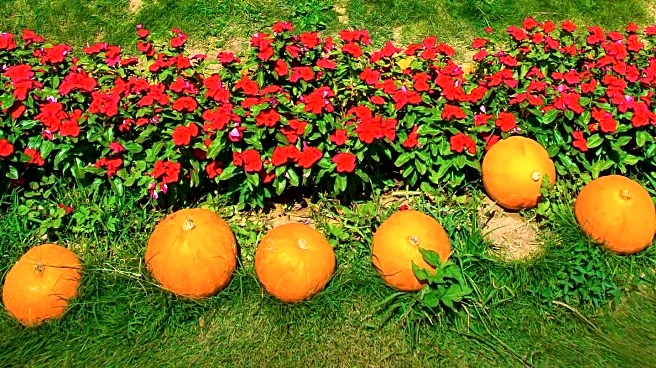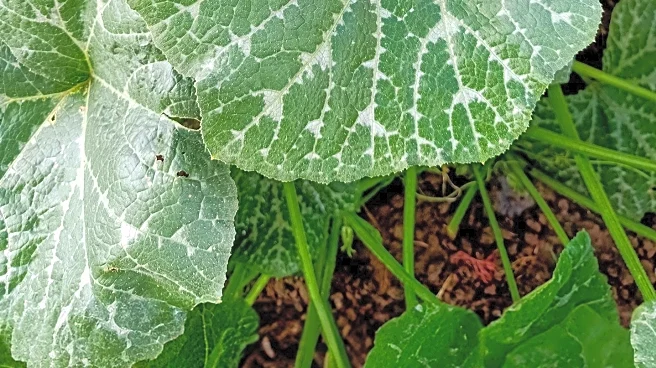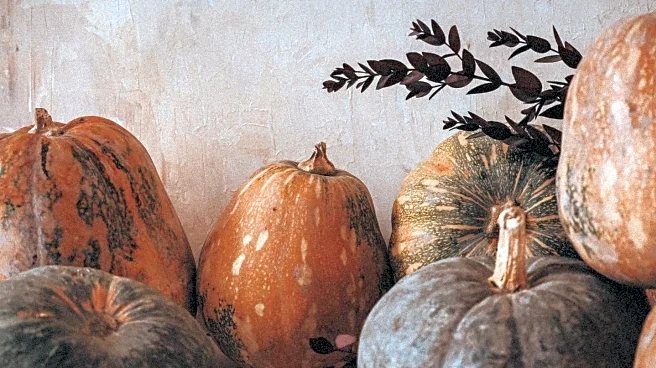What is the story about?
What's Happening?
Tony Scott, a semiconductor engineer from upstate New York, has successfully grown a giant pumpkin weighing 1,931 pounds, earning third place in an annual weigh-off competition. This achievement is part of a broader trend where growers cultivate massive pumpkins, often exceeding 2,000 pounds, for competitive events. The process involves selecting optimal seeds, such as the Atlantic Giant, and providing the right combination of water, nutrients, and care. Growers like Scott use techniques such as removing smaller pumpkins to concentrate resources on a single fruit, and protecting the pumpkin from sunlight to prevent premature ripening. The pumpkins' robust internal systems allow them to absorb nutrients and water efficiently, contributing to their enormous size.
Why It's Important?
The cultivation of giant pumpkins is not only a fascinating agricultural feat but also a cultural phenomenon, particularly in the U.S. where these pumpkins are celebrated at fall festivals and Halloween events. The practice highlights the intersection of science and agriculture, showcasing how scientific principles can be applied to achieve extraordinary results in crop production. This has implications for agricultural innovation and sustainability, as techniques developed for giant pumpkins could inform broader agricultural practices. Additionally, the popularity of these events supports local economies and fosters community engagement, drawing attention to agricultural science and its potential applications.
What's Next?
Following the weigh-off competitions, growers like Tony Scott often display their giant pumpkins at themed events, contributing to local festivities and community pride. These events provide opportunities for public engagement and education about agricultural science. As interest in giant pumpkin cultivation grows, there may be increased research into optimizing growth techniques and exploring the genetic factors that contribute to such large sizes. This could lead to advancements in agricultural technology and practices, potentially benefiting other crop types.
Beyond the Headlines
The cultivation of giant pumpkins raises interesting questions about the limits of plant growth and the role of human intervention in agriculture. It also touches on environmental considerations, as the resources required to grow such large plants could be significant. The practice encourages discussions about sustainable agriculture and the balance between human ingenuity and natural processes. Furthermore, the cultural significance of these pumpkins at community events underscores the role of agriculture in cultural traditions and community identity.
AI Generated Content
Do you find this article useful?














